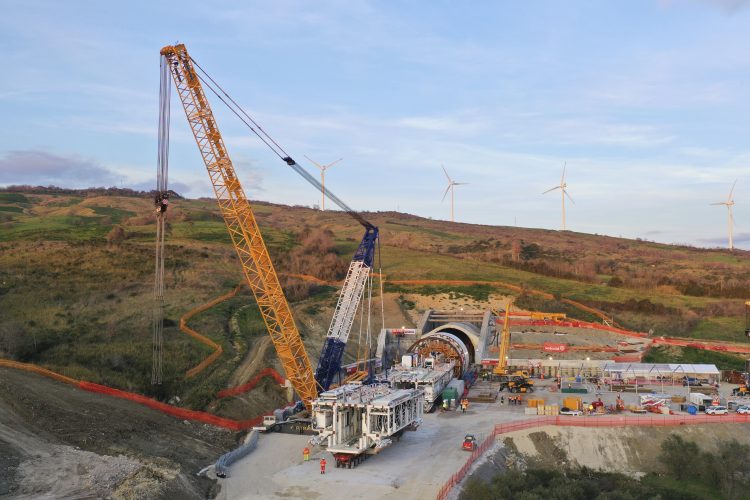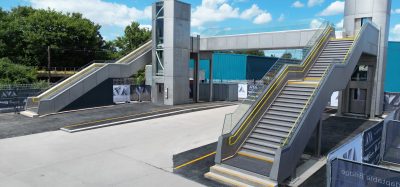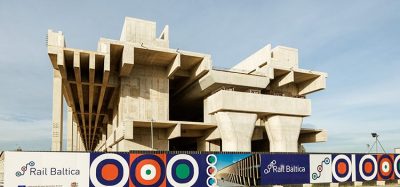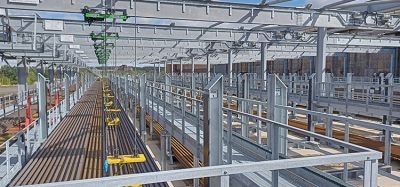The first large TMB on the Salerno Reggio Calabria Rail line begins excavation
Posted: 24 February 2025 | Elizabeth Jordan - Global Railway Review | No comments yet
One of the largest tunnel boring machine in Europe, and the first to be operational on the Salerno Reggio Calabria high-speed rail line, has fired up its engines, ready to excavate the Saginara Tunnel on Lot 1A Battipaglia Romagnano. The project is led by a Webuild consortium on behalf of RFI (Gruppo FS Italiane).


Joining the ignition ceremony remotely was Matteo Salvini, the Minister of Infrastructure and Transport, with the event also being attended by Lucio Menta, Special Commissioner for the Salerno Reggio Calabria High-Speed Rail Line, Nicola Meistro, Responsible Rail Operations in Italy at Webuild, and local authorities.
Measuring approximately 130 meters in length and weighing around 4,000 tonnes, the tunnel boring machine (TBM) “Partenope” features a 13.46-meter diameter cutting head, making it the largest TBM ever used by Webuild in Italy and Europe. It is powered by 18 electric motors generating a total output of 10 megawatts.
“Partenope” will now begin its journey through the hills of the Sele Valley, excavating the 3-kilometre Saginara Tunnel around the clock, seven days a week. This single-bore, double-track tunnel runs between the municipalities of Campagna and Contursi Terme in the province of Salerno. A very innovative and eco-friendly machine that will be operated and maintained by over 100 specialized technicians.
On Lot 1A Battipaglia–Romagnano of the Salerno–Reggio Calabria high-speed rail line, four tunnel boring machines (TBMs) will be in operation in the coming months to excavate eight mechanized tunnels along the route. Three of these rank among the largest ever used by Webuild Group in Italy and Europe. Alongside ”Partenope”, two massive twin machines are currently being assembled, each featuring a cutting head over 13 meters in diameter. One will excavate the Serra Lunga, Acerra, and Petrolla double-track tunnels, while the other will be used for the Caterina and Sicignano double-track tunnels.
In the coming weeks, the final modules of a fourth TBM will also arrive on site, set to be used for excavating the single-track Piano Grassi and Contursi tunnels. Previously used for the Grand Paris Express in France, this machine is the first TBM to have been fully refurbished at Webuild’s innovative factory in Terni—a new industrial hub, established last year by the Group, specializing in the regeneration of TBMs and other heavy machinery.
Webuild currently has a fleet of around 60 tunnel boring machines, including those in operation, assembly, ordered, and to be ordered for ongoing projects. In Italy alone, approximately 40 TBMs are set to be deployed across multiple construction sites. Webuild is deploying 30 TBMs across Southern Italy, supporting 19 projects, including major infrastructure works that will add more than 300 kilometers of high-speed, high-capacity railway lines. Since the beginning of construction, these projects have already created 8,100 jobs, including both direct employees and subcontractors, and have involved 5,400 supply chain companies.
Lot 1A, awarded to the Xenia Consortium—led by Webuild in partnership with Pizzarotti, Ghella, and Tunnel Pro—is entirely located within the territory of the province of Salerno. It is a key part of the broader Salerno–Reggio Calabria high-speed rail project. This strategic initiative will strengthen sustainable mobility across Italy, bridging the North and South, supporting regional development, and enhancing the country’s competitiveness and integration with Europe. Specifically, Lot 1A involves constructing 35 kilometers of high-speed rail between Battipaglia and Romagnano, including 20 tunnels (eight of which will be excavated using four TBMs) and 19 viaducts. The project also includes the construction of a junction at Romagnano, enabling the new rail line to interconnect with the existing Battipaglia–Metaponto–Potenza route.
Related topics
Infrastructure Developments, Route Development, Track Construction, Track/Infrastructure Maintenance & Engineering, Tunnelling








